Buy or gift a stand-alone digital subscription and get unlimited access to dozens of back issues for just £18.99 / $18.99 a year.
Please register at www.exacteditions.com/digital/cornucopia with your subscriber account number or contact subscriptions@cornucopia.net
Buy a digital subscription Go to the Digital EditionWhen Ottoman sultans wanted to outshine European monarchs by the end of the sixteenth century they were choosing elaborate entertainments as their ammunition rather than solemn victory processions. In the second article in her series on East-West rivalry, Christine Thomson focuses on the Istanbul festivities of 1582, a spectacular street party lasting almost two months
The arena may have shifted from war to commerce, but the rivalry between East and West remained just as intense at the end of the sixteenth century as it had in the years of Ottoman territorial expansion. It was Süleyman I’s extraordinary victory helmet – part classical parade helmet, part papal tiara – that earned him the title of The Magnificent among admiring foreign nations in the 1530s. At the century’s end his grandson Murad III’s most notable achievement was a series of public festivities inspired by Catherine de’ Medici’s famed series of political entertainments and vividly recorded in hundreds of miniatures in the volume known as the Surname. The miniatures illustrated here appear in a new study by Nurhan Atasoy, Surname-i Hümayun: An Imperial Celebration. They are among the 423 Surname miniatures in the Topkapı Palace.
Süleyman’s extravagant helmet, made in Venice and costing eight times the annual revenues of Aleppo and Tripoli, marked the end of Ottoman patronage of European Renaissance artists. Mehmet the Conqueror (1444–81) had invited Michelangelo and Leonardo to Istanbul. Encouraged by his grand vizier İbrahim Pasha, Süleyman also courted European artists. İbrahim, a collector of antiquities, was an enthusiastic patron on behalf of the Sultan. But after İbrahim’s execution in 1536, the Sultan adopted a modest form of dress, consumption at court was cut and plans were dropped for further European artefacts, including a series of tapestries to rival those of European courts.
Süleyman’s patronage of the arts did not come to an end, however. He had trained as a goldsmith in his youth, and during his reign craft societies akin to the European guilds were created, the most powerful of which was the nakkaşhane, the studio for talented painters and scribes. He was also a patron of architecture, undertaking an ambitious programme using native talent. While the Holy Roman Emperor Charles V built his own monastery, where he retired to a life of contemplation, Süleyman instructed Sinan to build his Süleymaniye Mosque, next to which he was later buried, and other buildings of restrained magnificence.
Under Süleyman’s grandson Murad III, also a great patron of the arts – notably miniature painting, calligraphy and bookmaking – encouragement of Ottoman crafts went hand in hand with a return to conspicuous display.
The celebrations for the circumcision of Murad’s son Prince Mehmet in 1582 lasted all of 55 days. They took a year to prepare, and invitations went to all the crowned heads of Europe. For Murad it was a chance to cement the various races and religions of the capital and to show the world what the Ottoman Empire was about: its cosmopolitan culture, its skills and, above all, its splendour. The event took place at a significant moment in his hostilities with Persia; it was also a brave piece of political public relations.
The Sultan’s eye was still firmly on Europe. Turkey was important in providing Europeans with the luxury items on which the rich and powerful depended to exhibit their status: the furs, the cloth, the rugs, the spices. It became a byword for the exotic and a magnet for Europeans, who always returned to Istanbul as soon as peace was declared. Murad’s celebrations, taking the form of the most elaborate procession ever seen, were a showcase for this rich market.
The guilds displayed their work, driving in ox-drawn floats past İbrahim Pasha’s former palace as the Sultan looked down from the loggia. There were shoemakers and cooks, craftsmen of every kind – even an asylum-keeper whose patients were paraded in gold chains. The participants joked with the crowds. The women of the harem arrived from their palace bearing a whole menagerie made of sugar. In a mock battle between Muslims and Christians, the Christian castle fell and out rushed four pigs (a reference to the Christian diet). A series of banquets was held (the people were also fed) and at night the sky blazed with fireworks. Christian galley slaves made a portable mountain which was filled with gunpowder so as to explode deafeningly in a cloud of smoke and disappear. Similar large displays were being staged all over Europe.
Most interesting, perhaps, from the point of view of parallels, was a short play put on for the occasion by Prince Mehmet’s aunt İsmihan Sultan. It was a mythological drama accompanied by music, somewhat in the style of one of Catherine de’ Medici’s enactments. A hired assassin approached a young child disguised as Cupid and tried to seize him, first by flattery, then by force. But a young girl armed with a javelin, resembling an Amazon or one of Diana’s nymphs, drove the aggressor away and saved the child. The references were classical, but the story was also reminiscent of a Central Asian epic – which would have been known to its Ottoman audience – in which women take up arms to protect defenceless young men. But the celebrations were cut short by the Sultan when brawling Janissaries, there to keep the peace, killed a sipahi (cavalryman).
Similarly, though more dramatically, another festival organised in France by the Queen Mother Catherine de’ Medici, to celebrate the marriage of her daughter Princess Margot to the Protestant Henri of Navarre, had ended in disaster. The festivities were marked by a series of magnificent court fetes, lasting several days. Featuring mountains, castles, imaginative mechanical props and scenery built for allegorical fantasies enacted by the court, the festival had been intended as the culmination of Catherine’s policy of religious reconciliation. Instead it was stopped by the bloody massacre of Protestants on St Bartholomew’s Eve.
There was one more fascinating parallel. As in Europe, so in Turkey the women of the court played a crucial part in this period. It was the women, although unseen, as etiquette demanded, who made the royal progresses watched by thousands, who built mosques, who initiated the huge charitable projects for which the Ottomans were famous. They were also in contact with their European counterparts. Murad’s mother, Valide Nurbanu, corresponded with Catherine de’ Medici, while his concubine, who later became Valide Safiye, corresponded and exchanged gifts with the other great woman leader of the late sixteenth century, Elizabeth I of England, who was herself supremely aware of the power of pageantry and image in politics.
Surname-i Hümayun: An Imperial Celebration, by Nurhan Atasoy, is published by Koçbank
In the 1950s, a palely beautiful summerhouse on the Bosphorus made tbe perfect playground for the cream of café society. Now its luminous, airy rooms, emptied of fuss and colour, reveal their natural beauty. Patricia Daunt uncovers the colourful past of Ratip Efendi’s yali.
A Turkish-inspired garden on the Cambridge Fens. Two Turkish passions meet in John Drake’s beautiful garden: a love of symmetry and an abundance of wild flowers. Here the garden historian acknowledges his debt to the Turkish ideal of paradise on earth.
SPECIAL OFFER: order five beautiful garden-themed issues, including this one, for only £80. List price £122
Some take the hard dusty route to the Mediterranean’s ancient sites. Christian Tyler approached them the hedonist’s way: cruising on a gulet along some of the most breathtaking coastline in the world.
Two isolated villages share an Ancient way of communicating across mountainous ravines. Andriëtte Stathi-Schoorel captures the last echoes in Greece and Turkey In Kuşköy (Bird Village), in the Eastern Black Sea Mountains, the ancient art of whistling is still taught to schoolchildren. It is in these very mountains, south of Trabzon, that Xenophon came upon a similar use of whistling nearly 2500 years ago. Only five communities in the world are known to share the ability to whistle their speech.
For thousands of years man has enjoyed the succelence of the grape. But the fruit is not its only gift.
More cookery features
One hundred and ninety years after the young Charlton Whittall first opened for business in Izmir, the members of this great dynasty are dispersed throughout the world. In June 359 descendants gathered at a reunion in London to celebrate the one thing that still inspires them all: their memories of life in Turkey.
An Egyptian rubbish heap reveals its buried treasure, mysterious birds deceive the eye, and Chinese clouds have silver linings. Philippa Scott continues her guide to the world of rug collecting
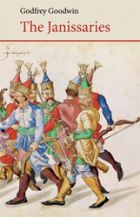
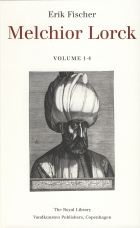
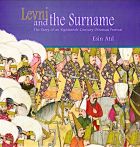
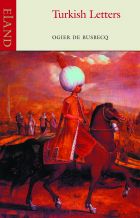
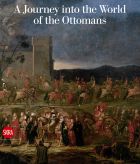
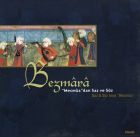
Bezmärä Ensemble

Cornucopia works in partnership with the digital publishing platform Exact Editions to offer individual and institutional subscribers unlimited access to a searchable archive of fascinating back issues and every newly published issue. The digital edition of Cornucopia is available cross-platform on web, iOS and Android and offers a comprehensive search function, allowing the title’s cultural content to be delved into at the touch of a button.
Digital Subscription: £18.99 / $18.99 (1 year)
Subscribe now